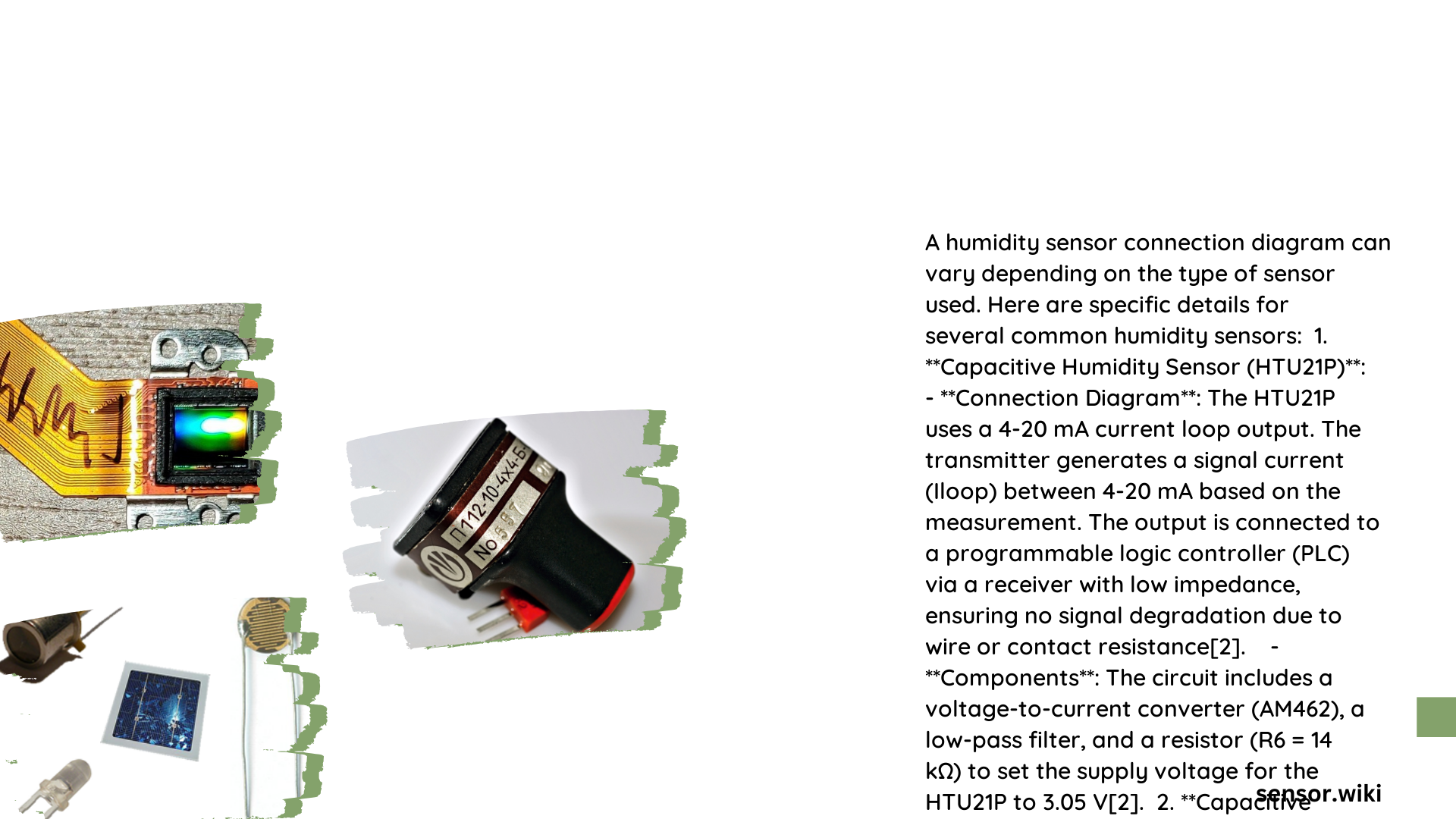Humidity sensor connection diagrams are critical for precise environmental monitoring in electronics and embedded systems. These intricate schematics provide engineers and hobbyists a roadmap to successfully integrate temperature and humidity sensors with microcontrollers. By understanding the precise pin configurations, voltage requirements, and communication protocols, developers can create robust sensing solutions for applications ranging from home automation to industrial monitoring.
What Are the Basic Components of a Humidity Sensor Connection?
Humidity sensor connection diagrams typically involve several key components:
Power and Ground Connections
- Voltage Supply: Usually 3.3V or 5V
- Ground Connection: Essential for completing the electrical circuit
- Sensor-Specific Voltage Requirements
Signal Interface Connections
- Digital Pins: For digital communication protocols
- Analog Pins: For analog sensor readings
- I2C/SPI Interfaces: For advanced sensor communication
How to Connect DHT11/DHT22 Humidity Sensors?

Wiring Configuration
VCC (Sensor) ---- 10K Ohm Resistor ---- Arduino 5V
DATA (Sensor) ---- Digital Pin (e.g., Pin 7)
GND (Sensor) ---- Arduino GND
Sensor Specifications Table
| Parameter | DHT11 | DHT22 |
|---|---|---|
| Humidity Range | 20-80% RH | 0-100% RH |
| Accuracy | ±5% | ±2-5% |
| Temperature Range | 0-50°C | -40 to 125°C |
| Sampling Rate | 1 Hz | 0.5 Hz |
What Are the Connection Steps for SHT31 Humidity Sensor?
Detailed Wiring Process
- Connect VCC to Arduino 3.3V/5V
- Connect GND to Arduino Ground
- Link SCL to Arduino SCL pin
- Connect SDA to Arduino SDA pin
How to Troubleshoot Common Humidity Sensor Connection Issues?
Potential Problems
- Incorrect voltage supply
- Loose wire connections
- Signal interference
- Library configuration errors
Diagnostic Checklist
- Verify power connections
- Check wire continuity
- Confirm correct pin assignments
- Validate library installation
What Tools and Equipment Are Needed?
Essential Components
- Microcontroller (Arduino)
- Humidity sensor
- Jumper wires
- 10K Ohm pull-up resistor
- Breadboard (optional)
Best Practices for Reliable Sensor Connections
- Use high-quality, short connection wires
- Implement proper grounding techniques
- Shield sensitive signal lines
- Perform regular calibration checks
- Protect sensors from environmental contaminants
Cost Considerations
Estimated Component Prices
- DHT11/DHT22 Sensors: $3-$5
- SHT31 Sensor: $10-$15
- Arduino Board: $20-$50
- Jumper Wire Set: $5-$10
Conclusion
Mastering humidity sensor connection diagrams requires understanding specific sensor characteristics, communication protocols, and proper interfacing techniques. By following systematic connection methods and best practices, developers can create reliable and accurate environmental monitoring systems.
